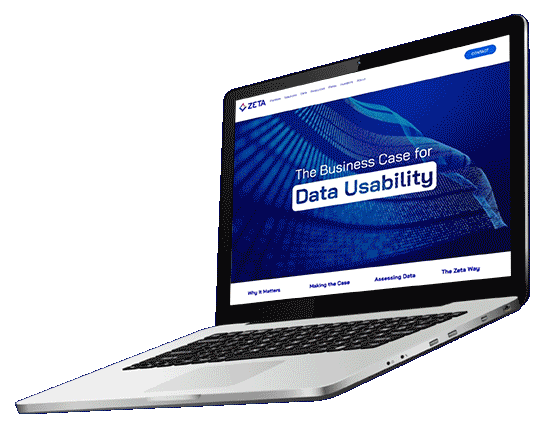THE BUSINESS CASE FOR
DATA USABILITY
Data Usability can address the most common data management woes from accessibility to accuracy and enables you to leverage data successfully at the speed of business today.
Get answers to these questions and more by downloading The Business Case for Data Usability:
- What is data usability and why does it matter?
- What are the key elements of data usability?
- How do I assess data usability in my organization?
- Why partner with Zeta to solve data usability

